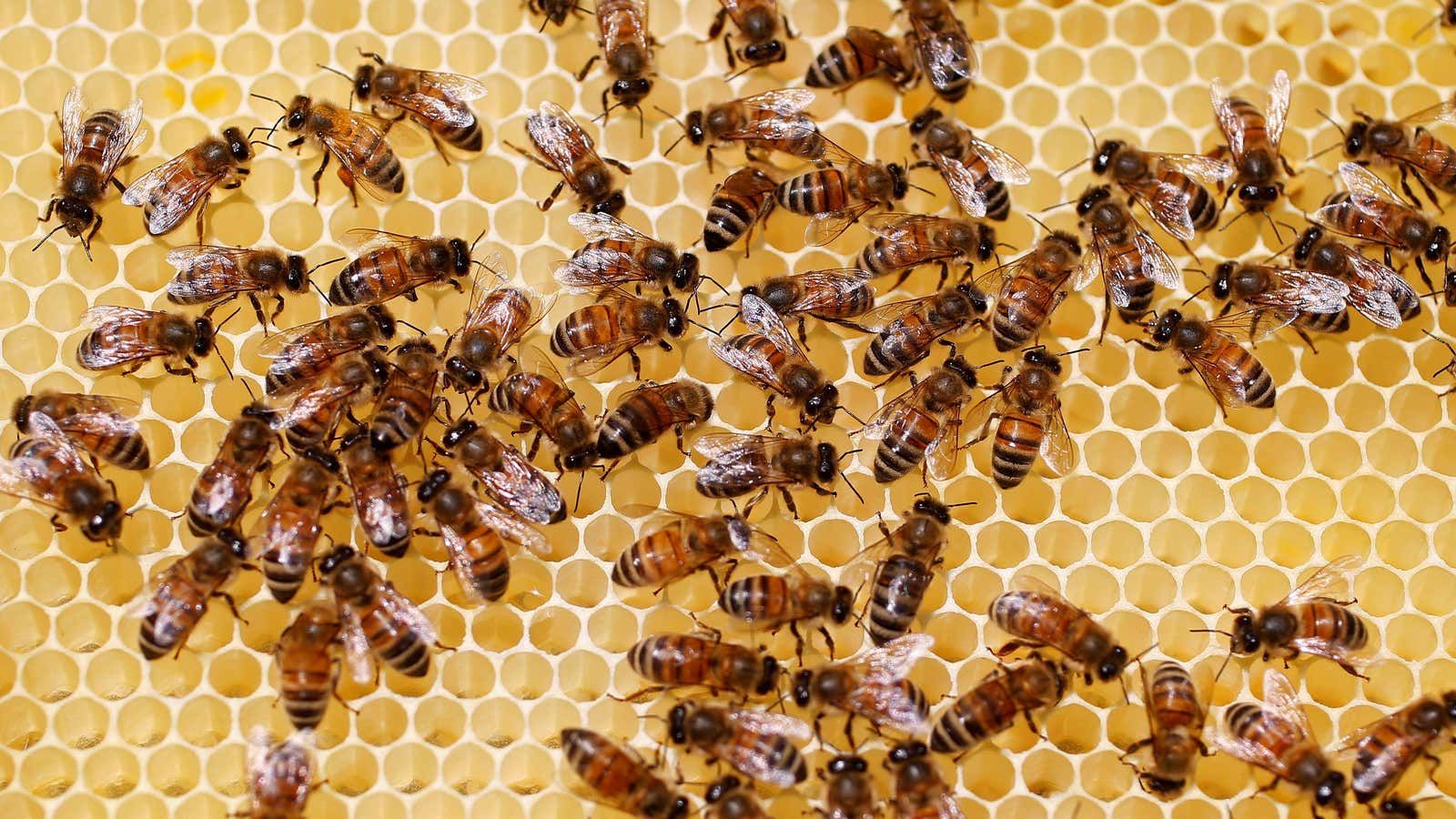One of the reasons people have so many food options to choose from is thanks to tiny little bees traveling by air to pollinate the blooms of fruit, nut, and vegetable-bearing plants. It’s estimated that somewhere between $235 billion and $577 billion worth of annual global food production relies directly on the little creatures. In all, about 84% of commercially-grown crops are insect pollinated.
But the future of bees’ work is in flux.
In the last decade, the agricultural community has experienced a rapid decline in the number of bees visiting flowers. This phenomenon is called colony collapse, and it presents a major challenge to farmers who are looking to grow the foods that will be eaten by the earth’s growing population.
But with the bee population struggling, Israeli technologists have started working on new and invaluable ways to support and a monitor bee colonies and their work.
Companies in the Holy Land have demonstrated cutting-edge technology that can mechanically pollinate entire almond orchards and monitor current bee populations with surprising precision. That has California farmers increasingly looking to tech companies out of Israel to help them solve a problem that still befuddles scientists in the field. The implication for agriculture is massive, as the sector is staring down the challenge of increasing food production by 70% across the entire world to feed an estimated 9 billion people 2050, according to the United Nations.
The pollination technology in Israel is already finding its way into the California market. The largest almond growers are currently installing Israeli technology into their beehives to predict when colony collapse will happen. Farms there are also toying with new Israeli robot technology that is able to complete many of the tasks a bee might do, only with long and flexible laser-wielding arms that can find and pollinate individual flowers.
“When you look at food security and the ability to increase output, it doesn’t matter how something is pollinated, it’s a question of what is the probability of a flower being pollinated and what happens if it’s not,” says Omer Davidi, the CEO of Israeli pollination tech startup BeeHero.
With that mindset, Davidi explains that the task of appealing to farmers about new agricultural technology becomes easier. Conversation shifts away from the existential consequences of colony collapse and instead hone in on methods for being a more efficient pollinator. Davidi makes it clear: He isn’t selling bees. He’s selling pollination.

So what’s the best way to pollinate?
The jury is still out on this question. Davidi banks on the idea that bees—having evolved over millions of years—are the most efficient pollinators, so his company focuses on maximizing their ability to work. He does this with what’s essentially Big Brother for bees (though, he refers to it in the less-ominous terminology “Fitbit for bees”).
BeeHero essentially marries the cybersecurity and machine learning skills of Davidi’s military background to create a system of sensors that can be placed inside a bee hive. Those sensors monitor all sorts of bee behavior, and then transmit that information back to farmers and beekeepers. The data can be used to predict problems before they happen for better hive management.
Here’s one example: When a queen bee is in her prime and mating, she can lay about 2,000 eggs per day, with fully-formed bees taking around 21 to 24 days to form. With all those extra hive roommates, bee colonies can get warm. And when the inside temperature of a hive reaches a certain point, the bees instinctively know to split the hive and create a new, second one. But that can be bad for farmers, because the second hive will essentially compete with the first one over a finite amount of acreage for pollination. The technology offered by BeeHero can also figure out for a farmer the best placement for hives to maximize pollination of flowers.

But there are other methods, too.
Some groups are working to develop a network of tiny bee-like drones, which use GPS, high-res cameras, and AI to help the little things navigate their way from flower to flower for pollination.
And another Israeli company, the Basmat Tivon, Israel-based Edete, has a large robot with severals arms that rolls up and down rows of trees and other planted crops to pollinate individual buds. Edete has already successfully demonstrated that its technology can work in California almond groves.
There are all sorts of ways to execute pollination. The question is what is the most cost-efficient way.

Why is California so important to Israel’s pollination tech companies?
Israeli companies such as BeeHero are already talking to farmers around the world in Europe and South America, and Africa, but it was important to first prove the concept behind their work in California, Davidi says.
“Things you can prove in the US can be taken to most of the world,” he explains. “Farmers want to see case studies from the US.”

Is the market for pollination tech companies that big in the California?
Absolutely. Almonds are the second-largest agricultural good in the state by value, clocking in at just over $5 billion per year. It accounts for about 80% of the global almond supply. There’s also a need for pollinator technology in apple orchards, as well as the pear, plum, water melon, squash, and cherry markets.
Overall, the crops market that depends on pollination has been estimated to be worth around $300 billion, and involves more than 1,200 tons of physical food.
“We came here to California and got good traction,” Davidi says. “I relocated to build the business here. It is definitely relevant for other areas.”
